I really admire the carp anglers that get out on the bank whatever the weather and we all know that catching carp in freezing weather is a massive buzz and a big achievement. One decent fish in my net at this time of year means more to me than a dozen taken in spring when they are feeding hard and moving all over the lake.
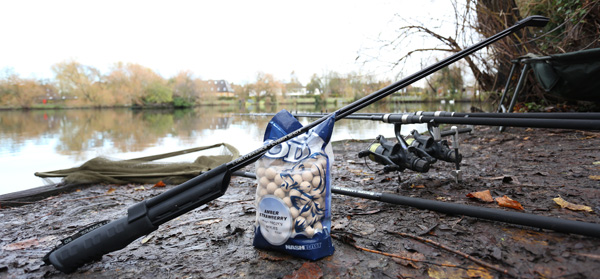
Yes I love catching carp all year and fill my boots when the weather warms up, but you just can’t compare those fish to ones caught now. As a youngster I was obsessed with trying to catch a carp in winter, there was hardly anyone carp fishing but I didn’t want to be put off and I did as much research as possible and started to go out all year round. It was one particular trip when I was around 14 (20 years ago) that made me realize carp were active and up for feeding in the cold. It was a Christmas social with a mate on an old estate lake and I took a spinning rod along just so I would get a bend in the rod as I honestly thought catching a carp would be impossible. It was when I was walking around terrorising the jack pike with my rusty Ondex spinner that I found a dozen or so carp moving around happily at the back of a reed bed.
Within ten minutes I had them eating some bread and I caught three over the next hour on freelined floating crust. Even my best friends, who would be waiting until 16 June (remember the old close season on lakes!) for their next carp trip didn’t believe me until I got my pictures developed at Boots (remember photo processing before digital too!). That one hour of winter action gave me the confidence to keep going through the colder months and twenty years later I’m still at it.
Location
My winter fishing nowadays is based heavily on location. I know that carp will have certain zones where they spend the majority of their time when the water temperature drops, if you get a rig in these zones your chances of catching are massively increased. Winter carp, as a rule, certainly don’t show themselves as much, so location work is done more on knowing the lake’s topography and which bank faces what direction. Cold air temperatures can really help to push carp on the back of the wind.
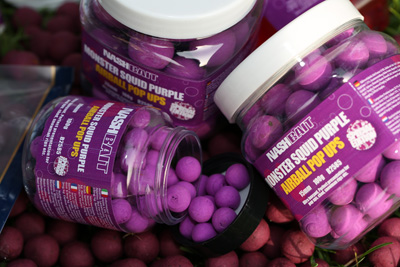 I remember last winter on my own day ticket lake, we had three or four weeks of cold westerly winds and it was no surprise that 90% of the bites came from the sheltered west bank. That side of the lake is even shallower than the rest of the lake, but the carp definitely did not want to be anywhere near the wind. This ‘back of the wind’ rule is not always the case though, especially on gravel pits which have more features for carp to shelter in.
I remember last winter on my own day ticket lake, we had three or four weeks of cold westerly winds and it was no surprise that 90% of the bites came from the sheltered west bank. That side of the lake is even shallower than the rest of the lake, but the carp definitely did not want to be anywhere near the wind. This ‘back of the wind’ rule is not always the case though, especially on gravel pits which have more features for carp to shelter in.
I get too many anglers who come to my fishery and head straight to their old favourite swims which I know are much better when the temperature rises. Before I go to any venue in the winter I find out as much as I can about where the most winter bites come from. I’m not interested in summer and spring hits. I just want to know the best cold water zones.
I fished a lake in Northampton on and off for a few years throughout the season. From March to November I caught 95% of my fish from the margins or surface / zig fishing. The carp did not like to feed in the silty, deep open water, but come winter it was their home. It was easy on that venue for me in the colder months because I spent no time looking and just fished the middle of the lake with a good sprinkling of boilies. I even returned to that lake a couple of years ago after not fishing it for four years for a magazine feature in February. I was told it hadn’t done a bite all year, so I was wondering if things had changed, but two 20lb plus commons in the morning from the open water silt told me things were still the same.
The cold weather is always against you, but winter carp can be predictable and when everything comes together you can have a session to remember. I’ve watched a couple of good anglers do this on my own lake this winter and it is nice to see anglers work things out and then make the most of it.
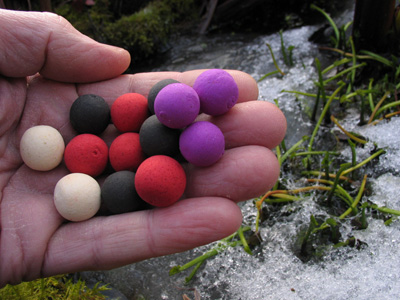 It can be harder to get something going in the warmer months, I know from doing tuitions on my own water, which I obviously know like the back of my hand, but I can spend hours some days looking and moving to get on the majority of the carp. However at this time of the year I know there are three zones to focus on, so I pick the bank which feels most comfortable and get the rods out.
It can be harder to get something going in the warmer months, I know from doing tuitions on my own water, which I obviously know like the back of my hand, but I can spend hours some days looking and moving to get on the majority of the carp. However at this time of the year I know there are three zones to focus on, so I pick the bank which feels most comfortable and get the rods out.
Winter baits and bait application
I’ve seen several different baits catch on my lake this winter, but without question the best quality boilies account for the bulk of the carp put on the bank. On my lake the carp love the Monster Squid, it is a consistent bait that keeps on working, so I’m not surprised that it is still doing bites in the colder months. The Monster is now available in red, black and purple colour options, during testing, using colour mixtures created a very enthusiastic feeding response. All three of these baits actually give off slightly different smells and taste which could be partly why winter carp seem to become so preoccupied with them.
Amber Strawberry is another of my winter favourites. I know that once carp get a little taste of this they will keep eating it right through the winter and when I’ve had my best hits in the winter, baits like Amber Strawberry have been responsible. Sweetcorn and hemp along with maggots are other excellent winter baits if you want to be different and believe the carp are not really on boilies.
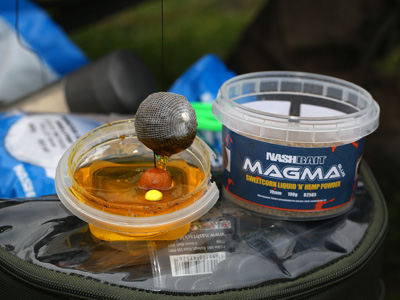 Bait application is important and big beds of boilies are not my choice in the cold; I like to introduce bait little and often during a session. On most waters the bird life will always take some bait during the day, so it is important to keep topping your spot up if this is happening. Spodding chopped boilies is another good way to get quick action. I’ve sometimes been guilty of being lazy and just used a throwing stick to scatter baits, but a few spods of chops can be a great edge if no one else is doing it.
Bait application is important and big beds of boilies are not my choice in the cold; I like to introduce bait little and often during a session. On most waters the bird life will always take some bait during the day, so it is important to keep topping your spot up if this is happening. Spodding chopped boilies is another good way to get quick action. I’ve sometimes been guilty of being lazy and just used a throwing stick to scatter baits, but a few spods of chops can be a great edge if no one else is doing it.
With sweetcorn I will use large amounts on venues which have ‘nuisance’ species, I know that carp will eat big quantities of this in the cold so I’m happy to put a big, tight bed out on some waters. Not many other anglers do this, I see most guys bring one little can for their session. I have taken trays of corn to some venues as I can’t put enough in at times when everything comes together.
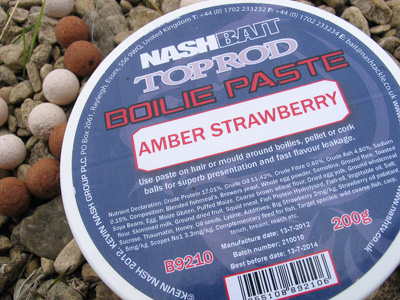 As I write this feature most lakes in the UK are again covered in ice, I know that when ice melts some lakes can be in great form. I’m not sure why this is, but I know I’m going to get my rods back out as soon as I can on a couple of waters I fancy. So many big carp get caught in February every year so don’t miss out by being late out on the bank.
As I write this feature most lakes in the UK are again covered in ice, I know that when ice melts some lakes can be in great form. I’m not sure why this is, but I know I’m going to get my rods back out as soon as I can on a couple of waters I fancy. So many big carp get caught in February every year so don’t miss out by being late out on the bank.
If you look at the top carp anglers they will already be out there fishing and they will be the ones rewarded for their efforts before the fishing gets easier. Time on the bank is never wasted, even if you think the conditions are rubbish. Each trip will help you zone those fish up and work out what they are doing. Getting some of your bait in will also be a big edge as when the carp do turn on they will be most confident picking up the bait they have seen the most of over the cold months.
Catch you next time – good luck.













